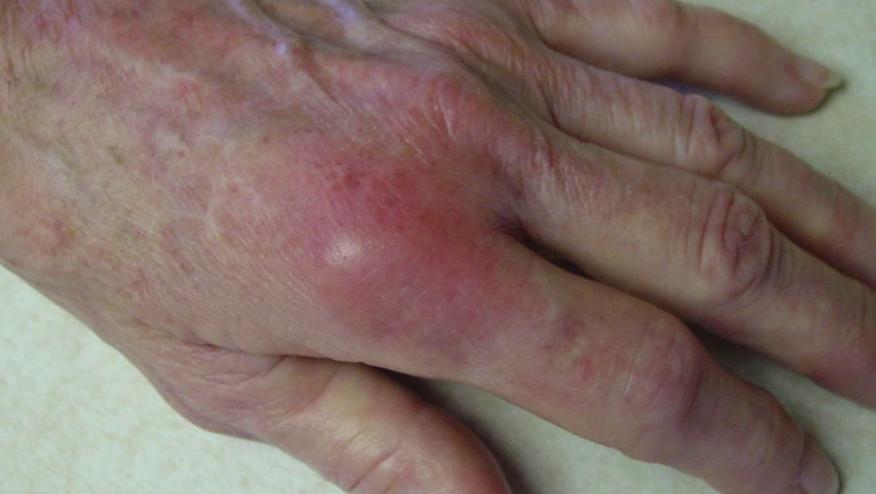Musculoskeletal Complications of Hematologic Disorders Reviewed Save

Morais and colleagues have published an informative review of rheumatologic and musculoskeletal (MSK) disorders that may potentially befall those with benign or malignant blood disorders. It is important to be aware of these associations. In some instances, the MSK manifestation may be the first sign of a hematological disorder.
The review focuses on a select few major hematological disorders - hemochromatosis, haemophilia, sickle cell disease, thalassaemia, leukaemia, lymphoma, myelodysplastic syndromes, multiple myeloma and cryoglobulinaemia.
Below are the high points worth considering in such disorders.
- Hemochromatosis: may cause a chronic inflammatory/degenerative arthropathy (+ chondrocalcinosis) affecting the 2nd and 3rd MCPs, knees, wrists, and others.
- Hemophilia: may be associated with acute hemarthroses (usually of large joints), a chronic arthropathy, or an increased risk of septic arthritis and osteoporosis.
- Sickle cell disease: Sickle cell dactylitis is not uncommon in children. Attacks with bone pain may represent bone infarction, osteonecrossis, vertebral collapse, or secondary ostearthritis. Bone infection is uncommon.
- Thalassaemia: multiple or recurrent spontaneous pathological fractures of the long bones have been seen.
- Leukemia: Osteopenia is most common; less common are osteolytic lesions involving the metaphysis of long bones, pathological fractures, osteonecrosis. Rarely, septic arthritis or gout. There is also a leukaemic arthritis: inflamed, erythematous and tender joints distal large joints.
- Lymphoma: Rarely with this present as a chronic poly- or monoarticular arthritis (knee, shoulder, sternoclavicular or elbow). Occasionally, septic arthritis, secondary gout or hypertrophic pulmonary osteoarthropathy.
- Myelodysplastic syndrome: Arthralgias are common and some will demonstrate a nonerosive symmetrical polyarthritis.
- Multiple myeloma: Osteoporosis and osteopenia and bone pain are common. Imaging shows osteolytic bone lesions and pathological fractures, mainly of the vertebrae, ribs, skull, shoulders, pelvis and long bones. Uncommonly associated with a symmetrical or asymmetrical inflammatory polyarthritis of knee, hands and feet joints.
- Cryoglobulinaemia: Mixed cryoglobulinemia often have arthralgia and myalgia. Type III cryos can get nonerosive oligoarthritis involving the MCPs, PIPs, knees or ankles.
Treatment for each of these varies widely and is covered by the review.










If you are a health practitioner, you may Login/Register to comment.
Due to the nature of these comment forums, only health practitioners are allowed to comment at this time.